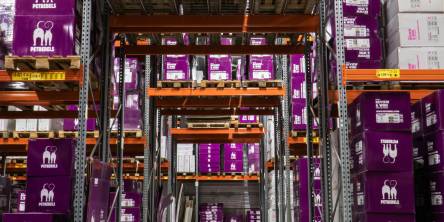How Are Robotics Going to Change the Field of Automated Testing?

Is actually quite staggering to think about simply how much testing needs to be done around the world on a daily basis. It's a natural effect of the overwhelming rate of technological development, delivered of unprecedented scale and complexity -- just consider how superior the average smartphone is relative to a comparable item of simply a decade ago, and how hard you should get things done nowadays without powerful software tools.
It has given climb to the automated tests industry: the ongoing quest of using yet more software to help make the design and setup of testing procedures as easy and efficient as possible. Today, for anyone who is planning a customer-facing program for release, you don't need to manually run through every last factor -- you can use a cloud service to replicate customer actions and swiftly find the data necessary to make final changes.
But a lot of automated testing process built from scratch, with sequences set out. Robotics greatly expand the options. Essentially, they can generate and do overarching macros regardless of the system. How will this cut change the field? Let's look into the broader impact robotics are likely to have:
Disparate items of software typically count on APIs to connect. Essentially, they translate each program's language into a common language that could be easily employed by other programs. This kind of is important for testing because many everyday techniques in the present business world rely on APIs for multiple applications getting used in combination.
But having to fool around with APIs isn't ideal. It requires you to hook up your testing tool to each every program that takes on a role in the procedure you're trying to record -- if it aren't hook up to even one of them, it will leave a gaping gap in the chain that will definitely prevent it from serving the desired role.
A robotic testing create, however, can imitate how a human treats software, using GUIs (not viewing them, as such, however being able to find their way) to execute activities. This means that any program is on the table, no matter the occurrence or quality of the API -- which means it will probably be so much easier to test hyper-complex processes.
They'll introduce NLP-parsed test creation
An substitute title for this point could be "They'll make testing tools intelligent", but that's a contentious state, so I prefer this place. This is likely to be the most significant change overall. Testing techniques currently need to be established with meticulous attention to detail, because programs aren't capable of simulating how humans examine things -- but progress marche on.
Using machine learning, it will (sooner or later) be feasible for a testing program to adopt a set brief and make an appropriate testing process without anyone needing to get manually involved. To get instance, you could concern the command of "Check that the customer subscription form is functioning correctly" to see the utility work following that. There may be some pseudo-creative elements, but for the most part, it will about sketching from a library of preset testing routines and adapting them to suit.
NLP (natural language processing), of course, is important for the very first step: gleaning from the quick (and the context) what the aim of a particular test is, and what specific elements must be examined. There will likely come a period when someone can tell their voice helper to check a certain system, and everything following that will be handled for them -- this is already a common feature in industries from online business (Shopify's ecommerce suite has got the Kit assistant) to fintech (Capital One's banking service has the Eno assistant).
They'll destroy some careers, but create others
Because nice as it is in some ways to envision this industry of hyper-convenience, recharging options worrying for some, because they envision the automation wave as more of a cudgel that will beat many job types into obsolescence. Admittedly, it's totally true that automation testing will make some jobs repetitive (a product quality specialist can't realistically rival the efficiency and reliability of an automated testing service), but it will also create jobs.
Why? Mainly because automated systems can (and do) get it wrong. Updates break things. Code systems get out of date. Structure errors go unseen. Plus the "smarter" we make automatic software, the more funeste its functionality will become. What exactly does it mean when such an software states (using an estimation of human assessment) that something is fine?
To keep this technology in line, the world needs people with skills in the AI field. This needs people who can manually test the automatic testing systems -- looking into them and vouching for the results they produce so that everyone down the line can feel reassured that they didn't exclusively accept the conclusions of an formula.
Similar Articles
For modern businesses to thrive, ensuring the effective management of inventory stands has become vitally important. Inventory management stands as a cornerstone of success. And the emergence of the Internet of Things (IoT) has introduced a new era of connectivity and efficiency across diverse industries.
Do you know what the following e-commerce companies have in common: Amazon, Walmart, eBay, and more? All of these e-commerce companies' apps make use of Java. Java is decidedly among the leading choices of programming language for e-commerce applications because it offers a world of benefits; for example, since Java code can be run on any platform with a Java Virtual Machine (JVM), users of e-commerce apps made with Java can access the said apps on a variety of devices.
Nikola Tesla in 1926, once described what is now called a mobile phone as a telephone that can fit into one's “vest pocket.” As otherworldly as that idea was then, nearly a century later, the reality is even more astounding.
Given the staggeringly high amounts of data being generated worldwide every single day, it ought to come as no surprise that organizations often struggle to pick the right tools to help them effectively harness the potential of all their data.
Managing properties can be a difficult task with the right tools. Property owners must find and use the best property management software. It can be a long and tedious process as there are many options in the property management software market.
In the ever-evolving financial services landscape, industry challenges are numerous and complex. From stringent regulations to rapidly advancing technology and changing consumer expectations, financial institutions face many obstacles.
The human learning capability is a great resource for helping technology evolve and grow, breaking boundaries, and creating new ones. Emulating the ability of humans to learn at a gradual but retentive pace, Machine Learning is the latest power monster that is redefining human-machine interaction.
In the ever-evolving landscape of low-code development, Microsoft's Power Platform stands out as a powerful tool for building custom applications. In today's dynamic digital landscape, creating and managing web pages is no longer the exclusive realm of professional web developers
In the data-driven business world, where information is of utmost priority, organizations are increasingly turning to data warehousing and data marts to harness the power of their data. These data management solutions are pivotal in transforming raw data into actionable insights.









